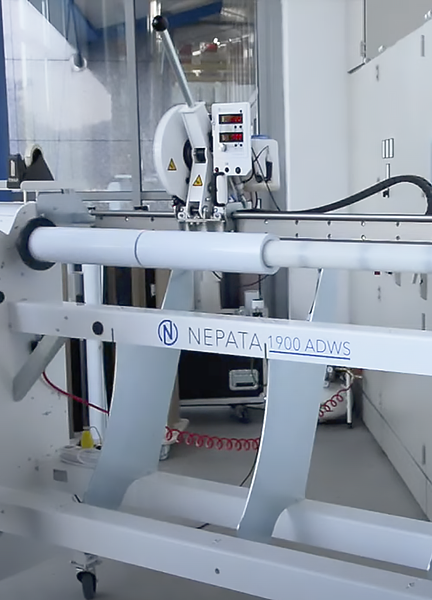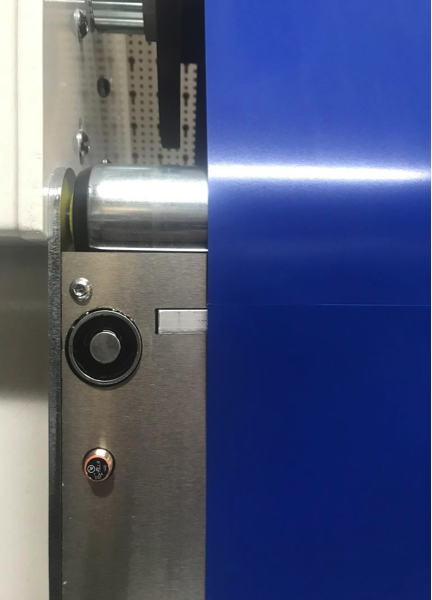Our series for optimizing film logistics looks at the distribution side this time. After all, a streamlined product range can help improve logistics – and avoid unsaleable scraps.
By NEPATA CEO Fabian Franke.
Today I would like to address a point that I am sure speaks to the heart of many logistic managers: film traders should also take a closer look at the offer. Is it even possible to offer all the many products in their diversity in a way that adds value? Of course, there is pressure from the market to be able to order as individually and as small as possible. But in logistics, this leads to problems that may not have been considered when the offer was designed. Here we can turn the tables and ask: What would we actually have to sell in order for our logistics to be consistently value-adding?
Problem Roll Scraps
For example, films are usually sold by the meter, but this leads to the fact that often very short roll scraps remain. After all, the typical customer does not need a single meter, but from three meters upwards. The leftovers end up piling up with one or two meters, sometimes they even overlap and have to be disposed of – which is often not considered at all in the calculation of the sales prices and margins. Not only goods and money are wasted this way, but also more space, which makes other goods less accessible or simply causes costs overall.
Avoid Roll Scraps
You can consider streamlining at least for parts of the assortment or special items. Instead of customized lengths and widths, there are only a few “standards”. If you only offer five-meter pieces from a 50-meter roll, there is no longer any scraps leftover in that sense. It is also possible to determine in the sales department which widths you have to offer. Is the full width 122 cm, the half width 61 cm and perhaps another 50 cm sufficient? Are the 38 cm, which may have been popular in the past, still even in demand?
Another suggestion about film width: Suppose a customer orders five meters of film in 61 cm width. As a rule, five meters of the 122 cm wide master roll are first wrapped around, and the five-meter roll is then cut in half. This means that another five-meter roll in 61 cm width remains for the time being. It will be stored until the next time something like this is ordered – or a roll that is even shorter. Then maybe another three-meter roll goes down, but the remaining two meters are left over again. However, if you know that you sell the 61 cm width of a medium pretty often, you can first divide a complete 50-meter roll into two 61 cm rolls and unwind the individual lengths from these. This means that you are much less likely to have unsaleable leftovers: the unwanted two-meter piece only comes once at the very end of the 50 meters and not in every section.

However, this procedure has the consequence that a higher stock of goods is necessary, and that a higher value of goods has to be kept in stock in the smaller widths. On the other hand, there is the advantage that there are way less unsaleable scraps. Perhaps these widths can also be given special attention in sales.
Sell Off Remaining Roll Scraps
This brings us to the topic: What to do with the remaining roll scraps? Often our customers do not have any systems for automating the use of scraps. In other words, you can get rid of scraps of one or two meters, which occur more frequently, by means of appropriate sales processing, attractive prices and automated posting in the ERP system. From my experience, there is great potential here to generate sales with goods that can otherwise only be disposed of.
Another option would be to offer – or even “threaten” – the customer with a splice. In this case, a customer who orders a run length of more than ten or 20 meters must expect a splice, a piecing of the medium. Or he will get a reduced price if he agrees to this. In this way, one could splice together a short remaining roll with a longer running length and thus keep the bearing slim. More about the splicing function on the NEPATA UA770 rewinding and slitting machine in this video.

Consulting on film logistics
I am sure that you will also find more potential if the sales department and the warehouse exchange ideas. Or you can use our know-how: As consultantwe help you to optimize your film logistics. For 15 years we’ve specialized in small and large logistics systems for film conversion around the world.
For more information on “Film Logistics Consulting”, click here





